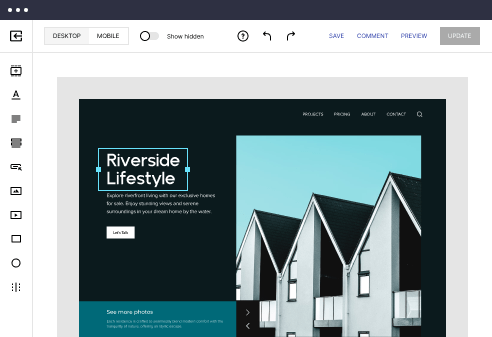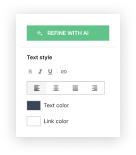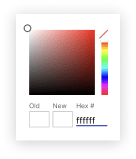
Onboarding page template for Quality Assurance (QA)
Explore Similar TemplatesAbout template
Making landing pages is easy with Instapage. Find your onboarding page template for Quality Assurance (QA) and easily polish it with our powerful editor.
Recommended templates
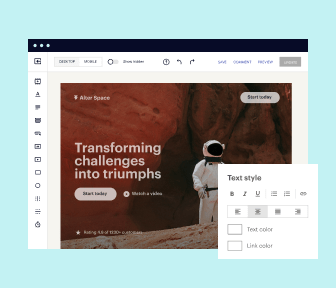
Easy to build without coding
With the intuitive drag-and-drop builder, anyone on your team can create high-converting pages without any knowledge of code or design. Make enhancements to your landing page with custom widgets using Javascript, HTML/CSS, or third-party scripts.
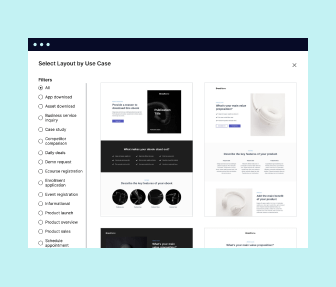
Multiple layouts for any industry and goal
Select from 500+ landing page layouts built to boost conversions across industry-specific scenarios. Customize them by adjusting fonts, adding images, and generating on-brand content with the AI assistant. Quickly scale with Instablocks® and Global Blocks that you can save, reuse, and update globally.

Loads fast and looks polished on any device
Every template is responsive, which means they present professionally on any device and load blazingly fast with our Thor Render Engine. You can also power them up with Google AMP technology to deliver an unparalleled mobile experience and drive higher conversions.
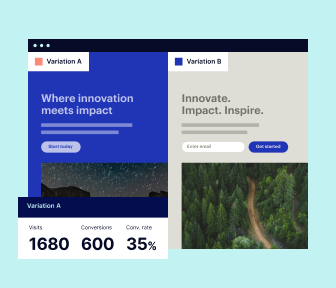
Robust analytics & experimentation
Get real-time updates and reporting across all your devices, showing the number of visitors, conversions, cost-per-visitor, and cost-per-lead. Launch AI-powered experiments, run A/B tests, and use heatmaps to analyze user behavior, then optimize your landing page to maximize conversions.
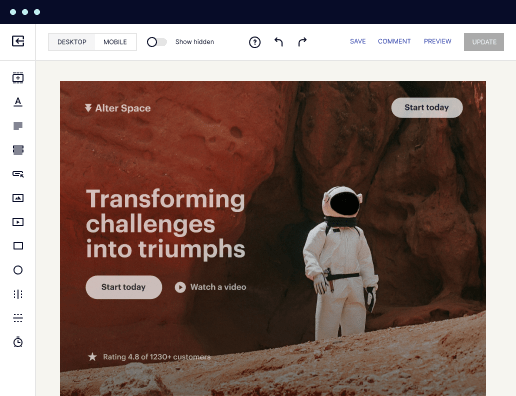
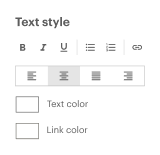
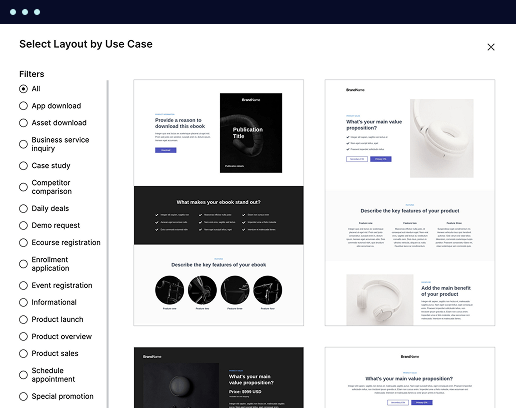

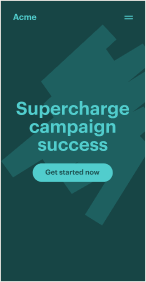
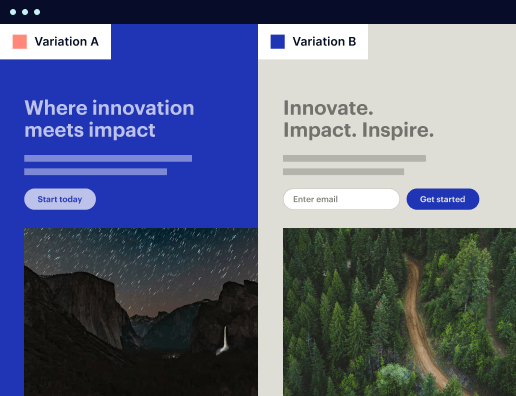
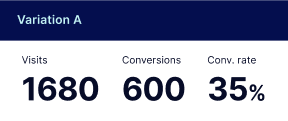
Easy to build without coding
With the intuitive drag-and-drop builder, anyone on your team can create high-converting pages without any knowledge of code or design. Make enhancements to your landing page with custom widgets using Javascript, HTML/CSS, or third-party scripts.
Multiple layouts for any industry and goal
Select from 500+ landing page layouts built to boost conversions across industry-specific scenarios. Customize them by adjusting fonts, adding images, and generating on-brand content with the AI assistant. Quickly scale with Instablocks® and Global Blocks that you can save, reuse, and update globally.
Loads fast and looks polished on any device
Every template is responsive, which means they present professionally on any device and load blazingly fast with our Thor Render Engine.
Robust analytics & experimentation
Get real-time updates and reporting across all your devices, showing the number of visitors, conversions, cost-per-visitor, and cost-per-lead. Launch AI-powered experiments, run A/B tests, and use heatmaps to analyze user behavior, then optimize your landing page to maximize conversions.
All the features you need to build qa document template
Explore more featuresLearn how to build qa onboarding
Frequently asked questions about qa documentation template
Leading the way in building high-performing landing pages





An onboarding page template for Quality Assurance (QA) professionals
In a rapidly evolving tech landscape, having a robust onboarding page template for Quality Assurance (QA) professionals is essential. This template aids in creating an organized and efficient process, enabling teams to understand their roles and responsibilities swiftly. Instapage’s flexible design allows for customization, ensuring that specific QA needs are addressed right from the start.
Understanding the importance of onboarding for QA professionals
Onboarding is not just about providing introductory materials; it’s about ensuring that Quality Assurance professionals get a clear view of their operational framework. A well-structured onboarding page improves knowledge retention, enhances role clarity, and fosters quicker adaptation to workflows. By using an effective onboarding page template, organizations can build a foundation for high-performance testing environments.
- Crystal clear role definitions help new QA professionals understand expectations right from day one.
- Structured training schedules ensure that onboarding is systematic, making it easier for QA professionals to navigate their learning paths.
- Access to essential tools and resources facilitates a seamless transition into the team, allowing QA professionals to engage effectively from the outset.
Step 1: Customize the onboarding page template
The first step is to tailor your onboarding page template according to your organization’s specific QA processes. This customization should reflect your testing methodologies, tools used, and the chemistry of your team. Make sure to include relevant resources that cater to both new hires and existing team members.
Step 2: Incorporate training materials and resources
Once you've customized the template, the next task is to populate it with useful training materials and resources. Consider including:
- Video tutorials that outline common testing exercises and practices, allowing professionals to learn visually.
- Documentation that elaborates on the use of specific software tools, ensuring users feel confident in their technological interactions.
- Links to internal systems or tools, making it easy for new hires to access what they need without confusion.
Step 3: Get feedback and iterate on the onboarding process
After implementing the onboarding page template, it’s essential to gather feedback from new QA professionals. Use their insights to refine your onboarding content, ensuring it's effective and engaging. Regular updates will keep the onboarding experience fresh and relevant.
- Conduct surveys after the onboarding process to collect qualitative data on the onboarding experience.
- Hold one-on-one feedback sessions to dive deeper into specific challenges faced during onboarding.
- Make adjustments based on feedback to improve training content, sequencing, and resource accessibility.
By following these steps, you can create an intuitive onboarding page template that stands out for Quality Assurance professionals, enhancing their initial experiences and fostering long-term engagement.
Ready to create a transformative onboarding experience? Try Instapage’s powerful landing page and CRO platform today and set your QA professionals on the path to success.
People also ask about Onboarding page template for Quality Assurance (QA) professionals
Onboarding page template for quality assurance QA professionals
The importance of onboarding for QA professionals: setting the stage
Onboarding is a crucial process in any organization, especially for Quality Assurance (QA) professionals. This phase marks the transition from a new hire to an integrated team member, and it sets the tone for their journey within the company. By establishing a comprehensive onboarding experience, companies can enhance employee satisfaction and retention, which ultimately leads to improved performance and quality of work produced by QA teams.
Understanding the role of QA engineers is vital when designing an onboarding page. QA engineers are responsible for ensuring that software products meet specified standards before they reach the end-user. Their role encompasses planning, designing, and executing test cases, as well as reporting defects and suggesting improvements. As such, quality assurance is an integral part of the software development lifecycle. However, new QA professionals often face challenges during onboarding, such as understanding company tools, policies, and workflows.
A clear overview of their responsibilities.
Understanding company procedures and tools.
Building relationships within teams.
Crafting the ideal onboarding page template
A well-structured onboarding page serves multiple purposes. Primarily, it aims to align expectations, clarify job roles, and embody the company culture to new employees. By defining the onboarding objectives, companies can create a process that enhances staff orientation and builds a strong foundation for ongoing training and development.
To enhance staff orientation, it’s vital that the onboarding page is thoughtfully designed. This includes not only the presentation of information but ensuring that the content is engaging and interactive. An onboarding page that aligns with company culture helps new hires feel welcomed and valued from day one.
Key components of an effective QA onboarding page
There are several essential contents that should be included in the onboarding page for QA professionals. First and foremost is an overview of the company’s mission, vision, and values. This foundational understanding allows new employees to see how their role contributes to the larger goals of the organization.
Moreover, an introduction to the QA department and its functions is critical. New hires should know the department's key responsibilities, how it fits within the company, and the importance of its role in maintaining high-quality standards. Additionally, providing a breakdown of the tools and technologies used by QA engineers, as well as detailed descriptions of team structure and key personnel, can significantly reduce initial confusion.
Company’s mission, vision, and values.
Introduction to the QA department.
Available tools and technologies.
Team structure and key contacts.
Engagement is equally important in the onboarding experience. Incorporating interactive elements such as multimedia content—videos and infographics—can make the learning experience more enjoyable and effective. Furthermore, links to online resources, forums, and knowledge bases can empower new hires to take charge of their learning.
Structuring the onboarding process: moving from theory to practice
Transitioning from theoretical knowledge to practical application can be challenging in QA onboarding. A buddy onboarding system, where a more experienced team member is paired with a new hire, promotes collaboration and community within the department. This program offers new QA professionals guidance and assistance, fostering a supportive atmosphere.
Choosing the right buddy is essential—it should be based on criteria such as communication skills, temperament, and familiarity with the onboarding material. The role of the buddy includes mentoring, assisting with specific questions, and helping the new hire navigate their new work environment. This partnership can help new QA engineers feel more comfortable and connected within the team.
Define the buddy's role and responsibilities.
Select buddies based on relevant characteristics.
Encourage regular check-ins throughout the onboarding process.
Price and value: investing in quality orientation
Investing in a comprehensive onboarding program for QA professionals is essential for efficient onboarding. Companies should assess the resources required, such as the time spent training new employees, tools needed to facilitate the onboarding process, and personnel devoted to mentoring. While the initial investment may seem significant, the long-term benefits often outweigh these costs, resulting in improved employee retention and elevated team performance.
Research shows that organized onboarding leads to greater job satisfaction and productivity. By investing in quality orientation, organizations can cultivate a more competent and confident QA workforce. For example, embracing sophisticated onboarding procedures has allowed companies in the tech sector to see lower turnover rates and enhanced team spirit.
Enhancing the QA culture through effective onboarding
Establishing the right culture from day one is fundamental to integrating QA professionals within the team. Acknowledging and promoting the company culture helps ensure that new hires feel aligned with the overarching goals of the organization. Activities such as team-building exercises or storytelling sessions can strengthen connections among team members and foster a sense of belonging.
Collecting feedback to refine the onboarding process is equally vital. Regularly seeking input from new hires through surveys or testimonials can offer invaluable insights into areas for improvement. This engagement demonstrates to new employees that their experiences matter and encourages a sustained feedback loop that can upgrade the onboarding experience for future hires.
Finalizing the onboarding experience
To ensure lasting success following onboarding, it’s crucial to establish continuous learning paths for new QA professionals. Setting clear goals and expectations within the team from the outset creates a roadmap for success. Additionally, implementing regular check-ins allows team leads to assess progress and address any lingering concerns.
Evaluating onboarding effectiveness through key performance indicators (KPIs) helps measure the impact of the onboarding process. Metrics such as employee engagement scores, training completion rates, and retention metrics provide the necessary data to enhance the onboarding experience continuously. Collecting and analyzing feedback from new hires further informs the company's approach to onboarding, ensuring it remains relevant and impactful.
Future trends in QA onboarding: innovations on the horizon
The landscape of onboarding is swiftly changing, guided by emerging technologies. The integration of virtual reality (VR) and augmented reality (AR) holds promise for creating immersive onboarding experiences that simulate real-world scenarios. QA professionals can benefit from training sessions that use these technologies to practice their skills in controlled environments, thereby building confidence before they start on live projects.
Moreover, artificial intelligence (AI) can personalize the onboarding process for QA engineers. By analyzing individual learning patterns and preferences, companies can tailor the onboarding content to meet specific needs and enhance effectiveness. Looking to the future, continuing to innovate in the onboarding process will position organizations to attract and retain top QA talent.
Closing thoughts
Encouraging ongoing improvement in the onboarding experience is crucial for fostering a culture of continuous development within the QA department. Regularly updating the onboarding manual and page reflects changes, ensuring it stays current with industry trends and company protocols. Engaging with departing employees can provide valuable insights on how to refine the onboarding processes for the future.
Moreover, fostering a culture of continuous feedback helps ensure that the onboarding experience is ever-evolving. By prioritizing improvement and adaptation, organizations can significantly enhance the orientation experience for new QA engineers, ultimately leading to higher quality work and increased employee satisfaction.
Ready to skyrocket conversions?
Supercharge your ad campaigns with high-performing landing pages
Get started